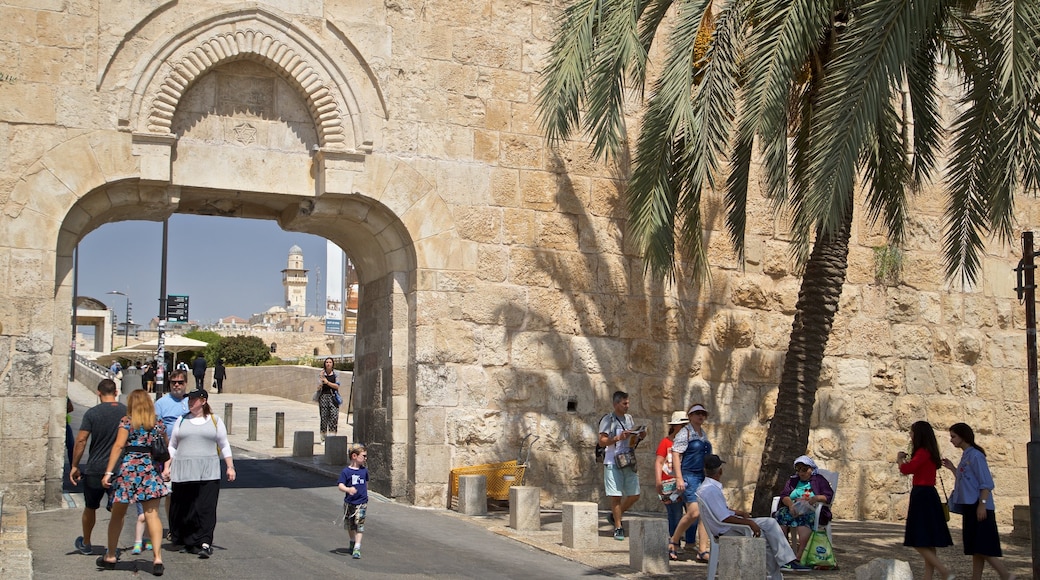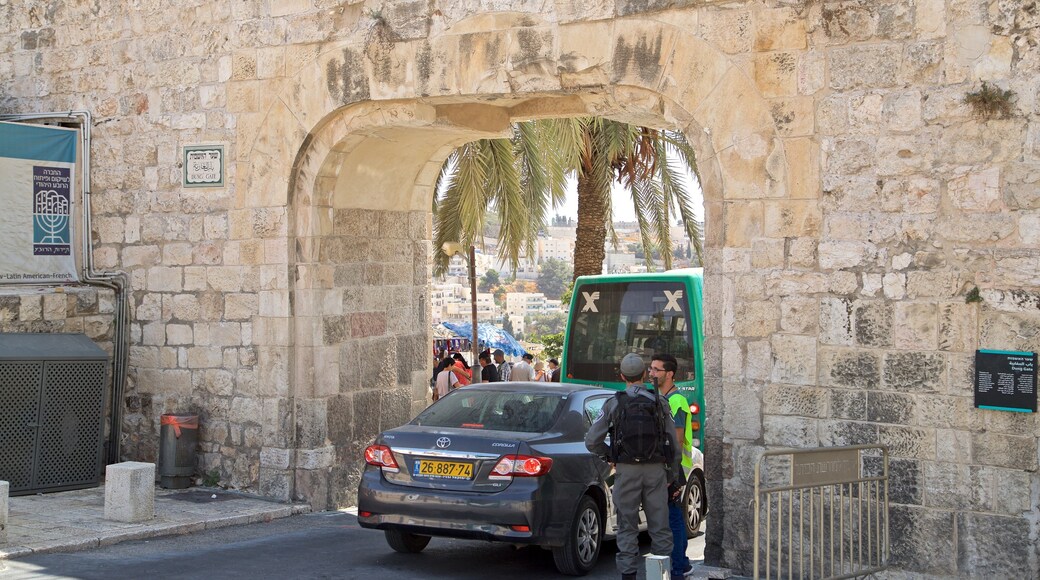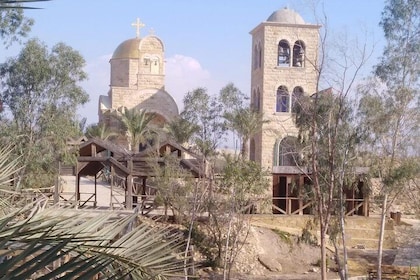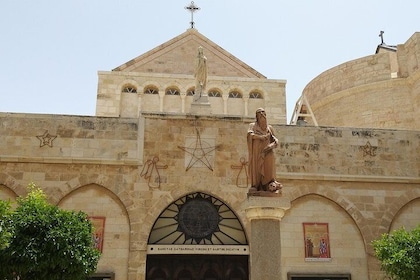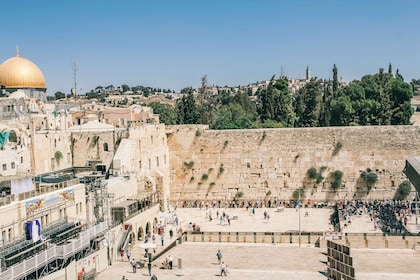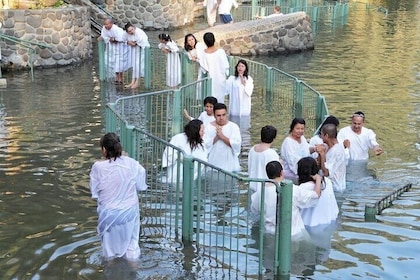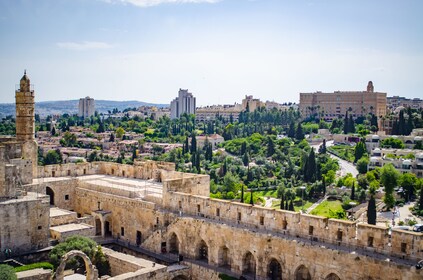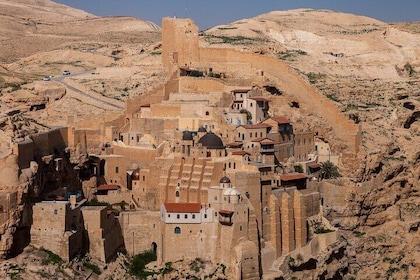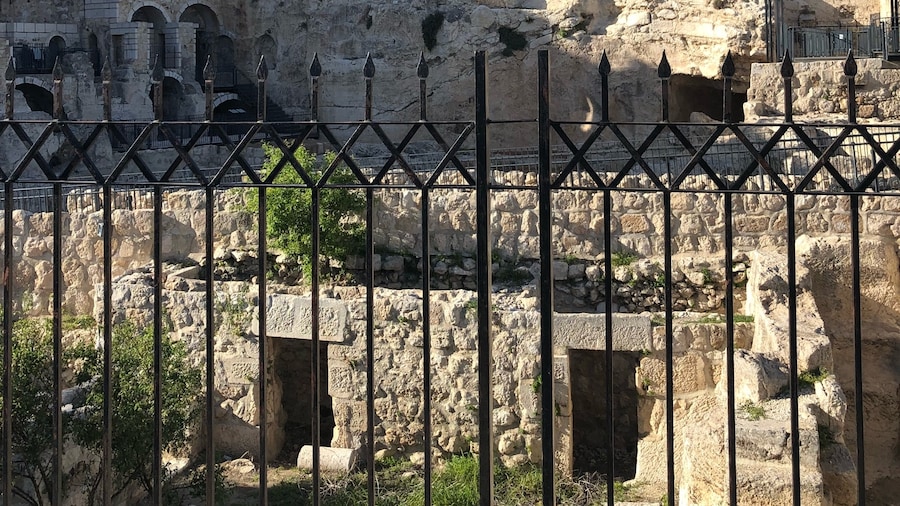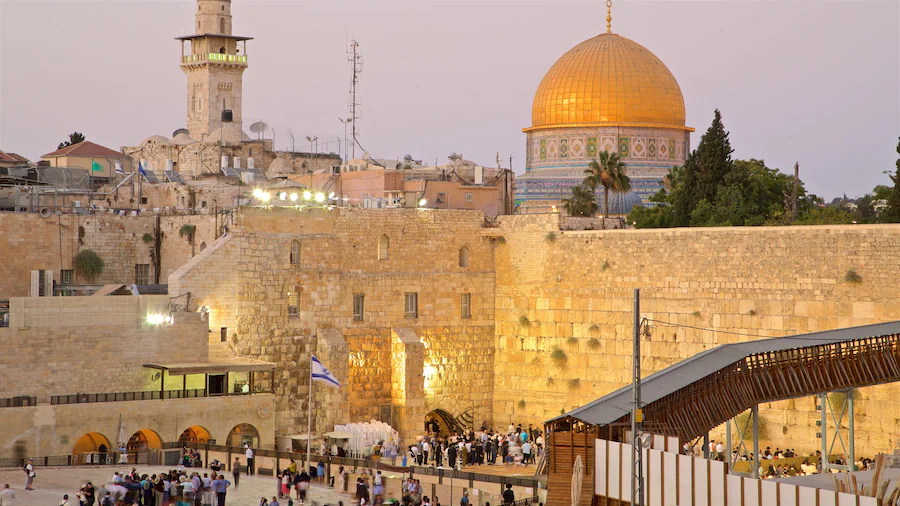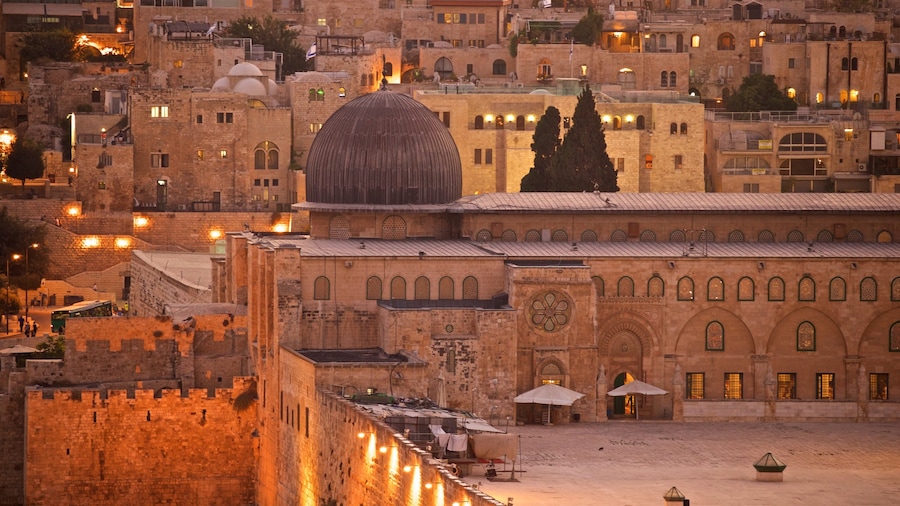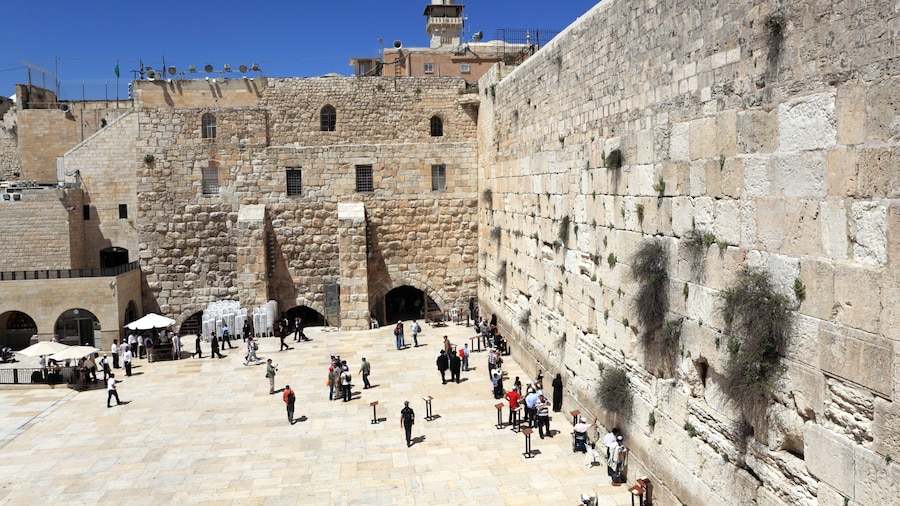Every day, hordes of local residents and sightseers pass through Dung Gate, one of seven functioning entrance points to Jerusalem’s Old City. Follow in the footsteps of pilgrims who have passed through this entranceway for centuries and learn about the reason behind the gate’s unusual name.
This gate, along with the rest of Jerusalem’s Old City walls, was built in the early 16th century by the then sultan of the Ottoman Empire, Suleiman the Magnificent. Walk along the walls and look for all eight gates that were installed at the time. Seven remain in use.
Stand back and view Dung Gate from afar. Though it is currently the smallest and perhaps most modest of Jerusalem’s gates, it was at one time even smaller. During the mid-20th century, the gate was enlarged to allow vehicular traffic to pass through.
Read about the story behind the gate’s decidedly humble name, which contrasts with the more grandiose names of the other gates, such as Lion’s Gate or Gate of Mercy. The story from centuries past is that this gate once provided access to a garbage dump, where foul-smelling refuse from the city was burned. These days, the vicinity around Dung Gate is very much free of garbage.
As you pass through the gate, look for stalls set up nearby. Most vendors here sell souvenirs and small gifts. Bring along some cash in case you see something you like.
After walking through the gate, emerge into the Jewish Quarter, a popular sightseeing destination. Here, find several noteworthy attractions including museums, synagogues and, most famously, the Western Wall. A holy site in Judaism, the 2,000-year-old wall is all that remains of the important ancient Jewish shrine known as Second Temple. Dress modestly and observe quietly as worshippers pray. Some worshippers write their prayers on paper before stuffing them into the wall’s crevices. As a nod to modern technology, the site also accepts digital prayers online.
Find Dung Gate in the southern wall of Jerusalem’s Old City. The gate is always open to the public.
